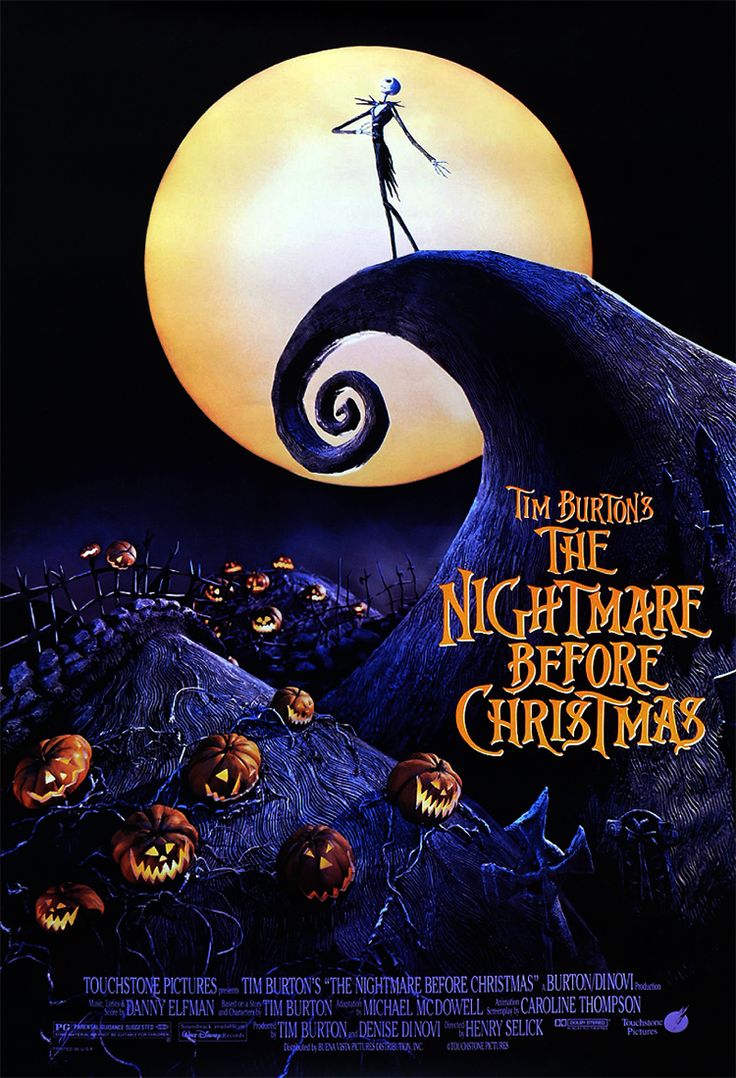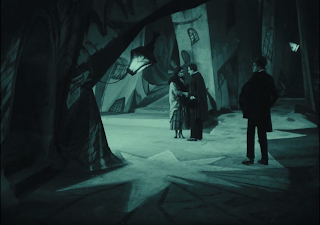The Cabinet of Dr. Caligari is a 1920 silent horror film, directed by Robert Wiene. It is an early example of German Expressionism in cinema that paved the way for developing genres and ideas for new directors. This review will also show connections between early cinema and other forms of art.
| Fig 1. Das Cabinet des Dr. Caligari poster (1921) |
The Cabinet of Dr. Caligari (or Das Cabinet des Dr. Caligari) is a 70 minute film about a man named Francis telling a story about a strange person called Dr. Caligari, who used a somnambulist (a sleepwalker) to commit acts of murder. While the basic plot of a hero, trying to save a woman from a villain is here, there are various plot twists and red herrings that keep the story intriguing.
Dr. Caligari was an example of German Expressionist film. German Expressionism was a movement in Germany that started just before World War 1, peaked in the 1920s and then faded out. It was one of the most influential creative moments of all time and went on to inspire major creators in many forms of media, including film directors like Alfred Hitchcock.
"I...acquired a strong German influence by working at the UFA studios [in] Berlin" - Alfred Hitchcock [Archive Footage] (Paul Merton Looks at Alfred Hitchcock, 2009)
The strange, twisted style of Caligari had a very strong influence over many different directors, notably Tim Burton. Most of Burton's films have a very strange and distinct style which can be traced back to German Expressionism and Dr. Caligari.
 |
| Fig 2. The Nightmare Before Christmas Poster (1993) |
The Nightmare Before Christmas is one of Burton's most famous works. It tells the skeleton that discovers Christmas. The film takes very clear inspiration from German Expressionism, and more specifically Dr. Caligari. The design of the world seen in Nightmare Before Christmas is very reminiscent of the distorted reality seen in Dr. Caligari.
For example: the poster for Nightmare (Fig. 2) shows Jack Skellington atop a strange looking hill. Compare this to Fig. 3, which is a still from Dr. Caligari.
Both shots show strange, slanted platforms. Burton continued with making films with a distorted view of reality, creating some truly bizarre visuals in films such as Charlie and the Chocolate Factory (2005), Alice in Wonderland (2010) & Dark Shadows (2012).
 |
| Fig 3. Cesare caries Jane across the rooftops (1920) |
Unlike most films which follow a 3 act structure, Dr. Caligari has 6 acts. Being a silent film, speech is shown on separate text screens that splice up the scenes. These text screens also display the act number. Along with that, the acting is extremely over the top, which was completely normal for the era. The camera was also incredibly static and was usually either a full, wide shot or a close up with a circular frame. Another thing is that almost all of the sets had a strange distorted feel to them, with the odd shapes and clearly painted textures. With all of these different elements the film feels almost like a theatrical production, which would make sense as cinema was nowhere near as common or popular as it has been in the last few decades.
“The structure of the film is accessible, with straightforward continuity editing. The camera is static and positioned front on, again recalling the theatre, and this is emphasised by the feature for which the film is most famous, its sets.” - (Dixon, 2011:41)
 |
| Fig 4. Street Concept Art (1919) |
If you compare figures 4 & 5, you will notice that both the concept art and the final set are very similar, even down to the spiked patterns on the floor.
 |
| Fig 5. Characters standing in the middle of the street (1920) |
While the story of the film wasn't anything spectacular, the effects of its creation are still being felt in films today, so it cannot be argued that the film was very influential.
Bibliography
Dixon, B. (2011) 100 Silent Films. London: Palgrave Macmillan.
Paul Merton Looks at Alfred Hitchcock. (2009) BBC4. 28 February. 21.00hrs.
Image Bibliography
Figure 1. Atelier Ledl Bernhard (1921) [Poster] At: https://commons.wikimedia.org/wiki/File:Das_Cabinet_des_Dr._Caligari.JPG (Accessed on 25.09.18)
Figure 2. The Nightmare Before Christmas Poster (1993) [Poster] At: http://transcripts.wikia.com/wiki/The_Nightmare_Before_Christmas (Accessed on 25.09.18)
Figure 3. Cesare caries Jane across the rooftops. (1920) From: The Cabinet of Dr. Caligari, Directed by: Robert Wiene [Film Still] Germany: Decla-Bioscop.
Figure 4. Warm, H. (1919) [Concept Art]
Figure 5. Characters standing in the middle of the street (1920) From: The Cabinet of Dr. Caligari, Directed by: Robert Wiene [Film Still] Germany: Decla-Bioscop.



Congrats, Terry - your first review, and for the most part, you maintain a suitably formal 'academic' tone - there are a few lapses: for example:
ReplyDelete"While the story of the film wasn't anything spectacular..." - this statement (while true perhaps of your feelings) is too subjective - lots of people might disagree with you (for example all those people who think the idea of the 'unreliable narrator' and twist ending of the story is nothing short of spectacular for such an early example of cinema) - so you're asserting a personal opinion here.
Love the fact you've for Hitchcock in there... BUT... in order for this point to be 100% evidence-based and engaging, I'd suggest a still from one of Hitchcock's early films proving the influence of German Expressionism is required.
Very encouraging, however - and I look forward to the next one :)
Hi Terry,
ReplyDeleteAh, Phil beat me to it! ;)
Yes, a very encouraging first review!
My only comments would be around the presentation...maybe make your font a little bigger (my poor old eyes were struggling a bit!) and enlarge your images a bit too. I would also not wrap the text around them, but have the relevant image under the block of text that it refers to...
Looking forward to what you make of 'Metropolis'!